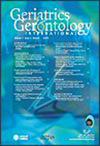Reciprocal links between nocturnal sleep and activities of daily living: A longitudinal study of midlife and older couples
Abstract
Aim
This study aimed to explore the bidirectional temporal relationships between nocturnal sleep (duration and quality) and activities of daily living (ADL) in midlife and older couples, while analyzing cross-spousal effects to inform collaborative health interventions for aging populations.
Methods
The longitudinal study utilized three nationally representative waves of data (2015, 2018, 2020) from the China Health and Retirement Longitudinal Study (CHARLS). We included 2420 participants (1210 dyads). Generalized estimating equations (GEEs) and cross-lagged panel models were employed to examine temporal and cross-partner associations.
Results
The mean age of participants was 60.01 ± 6.95 years, with 9.01% exhibiting ADL limitations. GEE results revealed non-significant temporal effects on husbands' ADL changes (z = 1.741, P = 0.082), whereas wives demonstrated a significant decline in ADL function over time (z = 2.705, P = 0.007). In the sleep-duration model, wives' sleep duration directly predicted husbands' subsequent ADL (β = −0.058 and −0.044; P < 0.05), and several indirect partner pathways were observed. In the sleep-quality model, husbands' poorer sleep quality directly predicted wives' later ADL (β = 0.077 and 0.052; P < 0.05), while wives' poorer sleep quality influenced husbands' ADL indirectly via husbands' subsequent sleep. Eight hypothesized cross-spousal paths were supported at P < 0.05.
Conclusions
These findings highlight clinically significant bidirectional sleep–ADL dynamics in couples, emphasizing the need to treat spouses as interdependent health units. Incorporating brief partner sleep screening and dyadic sleep or caregiver supports into geriatric and rehabilitation pathways may help mitigate downstream functional decline. Geriatr Gerontol Int 2025; 25: 1379–1388.


 求助内容:
求助内容: 应助结果提醒方式:
应助结果提醒方式:


